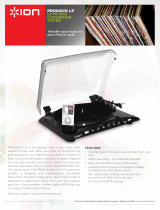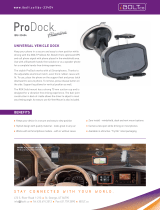
Table of contents - 3
TABLE OF CONTENTS
First things first 6
Your guides ............................................. 6
Basic care and tips for using your
computer.................................................. 6
Turning your computer on and off............... 6
Taking care of your computer ..................... 7
Taking care of your AC adapter .................. 7
Taking care of your battery pack................. 8
Cleaning and servicing................................ 8
Your Acer notebook tour 9
Screen view ............................................. 9
Keyboard view ....................................... 10
Left view ............................................... 11
Information on USB 3.0............................. 12
Right view ............................................. 12
Base view .............................................. 13
Using the keyboard 15
Lock keys............................................... 15
Hotkeys ..................................................... 15
Windows keys........................................ 16
Touchpad 18
Touchpad basics ................................... 18
Touchpad gestures................................ 18
Recovery 20
Creating a recovery backup................... 20
Creating a drivers and applications
backup................................................... 22
Recovering your system ........................ 24
Reinstalling drivers and applications......... 25
Returning to an earlier system snapshot .. 27
Returning your system to its factory
condition.................................................... 28
Recovering from Windows ........................ 28
Recovering from a recovery backup ......... 31
Changing to Windows 8.1 or Windows
7 34
Changing to Windows 8.1...................... 34
Changing to Windows 7......................... 35
Changing BIOS settings ........................ 36
Changing between Windows 7 and 8.1
during startup......................................... 38
Connecting to the Internet 39
Connecting with a cable ........................ 39
Built-in network feature ............................. 39
Connecting wirelessly............................ 40
Connecting to a wireless LAN................... 40
Connecting to a 3G network ..................... 41
Using a Bluetooth connection 42
Enabling and disabling Bluetooth .......... 42
Enabling Bluetooth from Windows 8.1...... 42
Adding a Bluetooth device ..................... 43
Near Field Communication (NFC) 46
Enabling NFC on your computer ........... 46
Sending your contact information .......... 46
Receiving information with NFC ............ 47
Contact pickup 48
Sending your contact information .......... 48
Acer ProShield 50
Overview................................................ 50
Setting up Acer ProShield...................... 50
Personal Secure Drive .............................. 52
Credential Manager ............................... 53
Fingerprint Registration* ........................... 53
Data Protection ...................................... 54
Data Removal ........................................ 54
BIOS utility 55
Boot sequence....................................... 55
Setting passwords ................................. 55
Securing your computer 56
Using a computer security lock.............. 56
Using passwords ................................... 56
Entering passwords .................................. 57
Power management 58
Saving power ......................................... 58
Battery pack 60
Battery characteristics ........................... 60
Charging the battery ................................. 60
Optimizing battery life ............................... 61
Checking the battery level......................... 62
Battery-low warning .................................. 62
Installing and removing the battery pack .. 63
Traveling with your computer 64
Disconnecting from the desktop ............ 64
Moving around ....................................... 64
Preparing the computer ............................ 64
What to bring to meetings ......................... 65
Taking the computer home .................... 65
Preparing the computer ............................ 65
What to take with you................................ 66
Special considerations .............................. 66
Setting up a home office ........................... 66
Traveling with the computer................... 67
Preparing the computer ............................ 67
What to take with you................................ 67





















